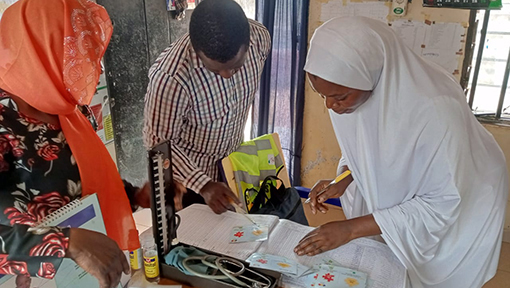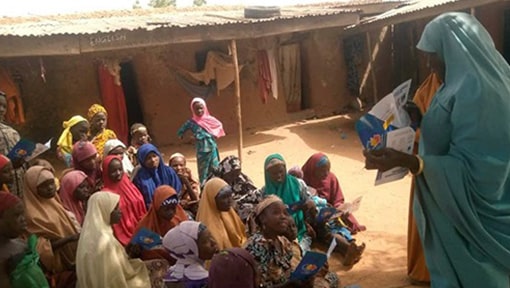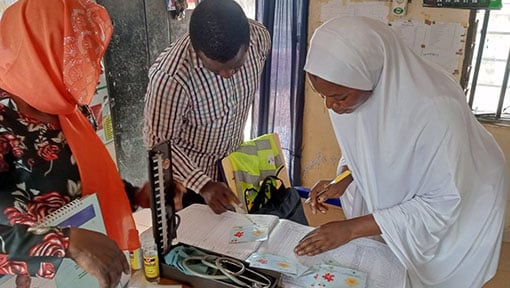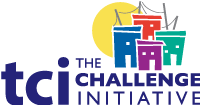QITs Help Strengthen Community Ownership of Health Service Delivery in Rivers State, Nigeria
Contributors: Udauk Chidozie Ananaba
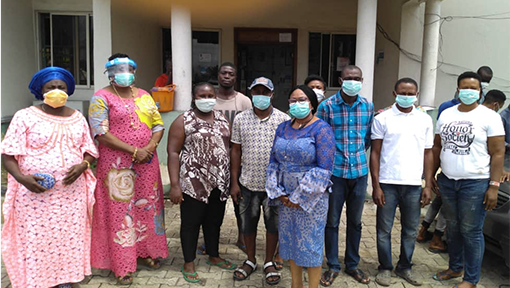 Before The Challenge Initiative (TCI) expanded to Ahoada West and Okrika local government areas (LGAs) in Rivers state, the linkages and partnerships between their communities and health facilities were suboptimal. As a result, community interest and use of services provided by the health facilities were inconsistent and less than expected – considering the size and poor health outcomes in both LGAs.
Before The Challenge Initiative (TCI) expanded to Ahoada West and Okrika local government areas (LGAs) in Rivers state, the linkages and partnerships between their communities and health facilities were suboptimal. As a result, community interest and use of services provided by the health facilities were inconsistent and less than expected – considering the size and poor health outcomes in both LGAs.
In June 2020, TCI provided orientation and technical support to the Reproductive Health (RH) Supervisors of Ahoada West and Okrika LGAs on how to select and inaugurate health facility quality improvement teams (QITs) – a TCI high-impact intervention. The QITs are made up of diverse group of influential community members that use their voice and networks to lead and champion improvement efforts towards better quality family planning and other maternal and child health care services. The QITs in Ahoada West and Okrika have now been empowered to take responsibility for the health of their communities and are making progressive contributions to the health facilities.
Mrs. Helena Onisomadetu, a women’s leader and member of the QIT at Ikodi health facility, shares:
The forming of this group [QIT] helped us to know what we are supposed to do as a community to help the health center. They taught us how to encourage people to come and use the facility, how to encourage our boys and our girls. Now, people come to the health center more than before. They taught us to give birth to the number of children we can take care of, and we should do so at the facility moving onward so that everything will be alright. They taught about family planning too. How our boys should not behave and impregnate somebody for her parents to cater. Then, how the girls too should maintain their lives, so that they can continue their school and not get pregnant along the way.”
Speaking of the QIT’s support to the facility, she continues:
I love the health center and I believe that our community too loves the health center……when we saw how the road to the health center was, we gathered as a group [QIT], we held meeting and we said let us go and clear it so that doctor and everyone can pass smoothly. We did the road in a way that when you see it, you will like it. Also, there was a day that the storm blew off one of the roofing, so we coordinated inside the community. We asked people to support, and they did, and we fixed the roof.”
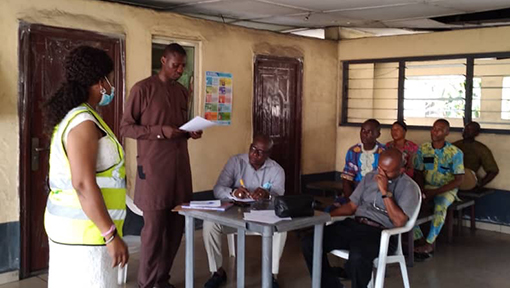
A QIT meeting in progress.
Similarly, Mr. Emmanuel Victor, the community chairman of Kalio-Ama QIT, recounts how the QIT strengthened relationships with the health facility:
Kalio-Ama as a community is very careful the way we handle government facilities like the schools, the health center, etc. Even one of our sons that is away has been working on the health center for some time, renovating it and putting one or two things in place. So, I know we have been working very hard before the quality improvement team came in but they coming helped us to reinvigorate steps we need to take to make the health center better.
Any time the facility staff inform us of anything that is lacking, in our usual way we hold meetings. Decide on it. So, when the light issue came, to be specific about it, we said okay connect them [the health center] to the church through the community generator, which is close to the health center. It is a town generator so we said they [church] should give them [the health center] light; let the two of them [church and health center] use it. Even there is a move we made to see that the broken facility fence, let us get some cement and mould some blocks to raise it up. Also, the overhead water tank has some fault. One of us has been asked to find out the details. We are looking at it and it will be fixed.”
Improving the linkages between the community and health facility through the QIT approach has created community accountability for health services, engendering not only community ownership but also stimulating improvement initiatives that will enhance the performance of the health facilities, ultimately resulting in enhanced community health.

